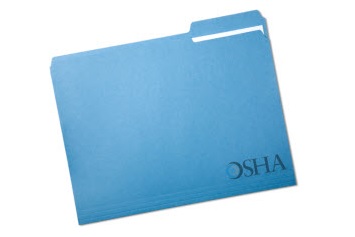OSHA’s fall 2016 regulatory agenda, released in late December, enumerated more than 2 dozen planned actions for the agency over the next few months. But with a Trump administration taking the reins on January 20, it remains to be seen how OSHA’s priorities will evolve under new direction.
 |
All of the actions in the final rule stage have been completed, including the recent standard to reduce occupational exposure to beryllium, the new walking and working surfaces and personal fall protection rule, and the rule reiterating employers’ responsibility to make and maintain accurate injury and illness records.
Proposed rules in the latest regulatory agenda include the following:
- Infectious diseases. OSHA is considering the need for a regulation that addresses the risk to workers exposed to infectious diseases such as tuberculosis, measles, varicella, pandemic flu, and other threats in healthcare and other high-risk environments. A potential standard would require employers to establish a comprehensive infection control program and control measures to protect employees from exposure to disease-causing pathogens.
- Amendments to the cranes and derricks in construction standard. OSHA is proposing corrections and amendments to the standard for cranes and derricks published in August 2010.
- Update to hazard communication. OSHA is proposing to update the hazard communication standard to the latest version (sixth edition) of the globally harmonized system of classification and labeling of chemicals (GHS).
- Respiratory protection fit-testing protocols. OSHA is proposing to allow for the incorporation of new fit-testing protocols under its respiratory protection rule.
- Crane operator qualification in construction. This rulemaking will identify criteria for employers to follow to ensure their crane operators are completely qualified to operate cranes safely on construction sites.
- Tree care. OSHA currently does not have a standard for tree care and thus relies on a variety of applicable standards to address hazards in the industry. OSHA is assessing the need for a specific standard for tree care.
- Puerto Rico state plan. Puerto Rico has initiated the process to receive final approval of its occupational safety and health plan.
Prerules include:
- A review of the bloodborne pathogens standard to consider the continued need for the rule and whether it overlaps, duplicates, or conflicts with other regulations
- Combustible dust in general industry
- Preventing backover injuries and fatalities
- Shipyard fall protection
- Communication tower safety
- Emergency response and preparedness
- Mechanical power presses update
- Powered industrial trucks
- Lockout/tagout update
- Revocation of obsolete PELs
- 1-bromopropane standard
- Noise in construction
- Preventing workplace violence in healthcare
- Occupational exposure to styrene
- Blood lead level for medical removal
- Updating requirements for the selection, fit testing, and use of hearing protection devices
The regulatory agenda can be found at http://ow.ly/q3U8307Givm.
